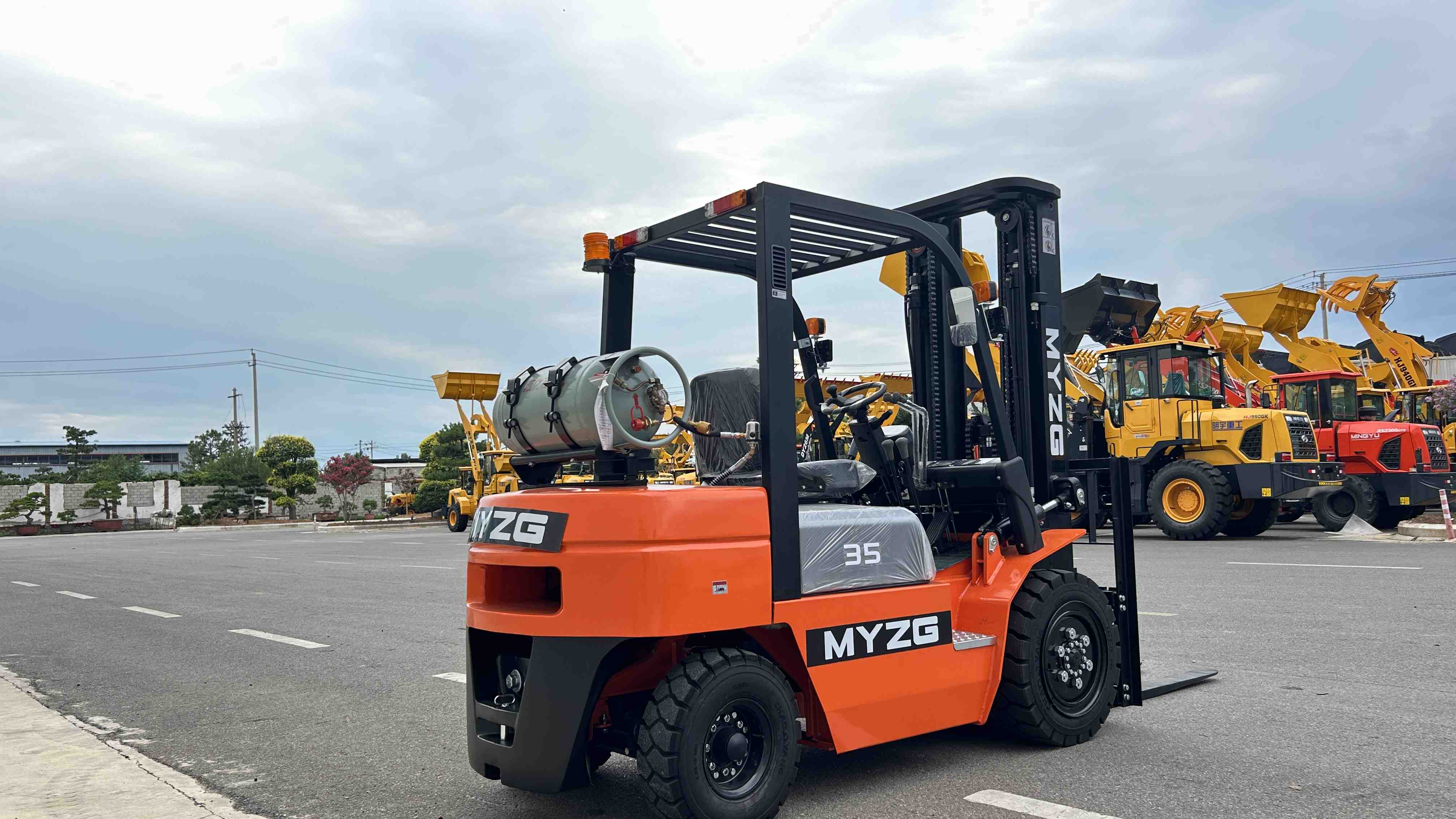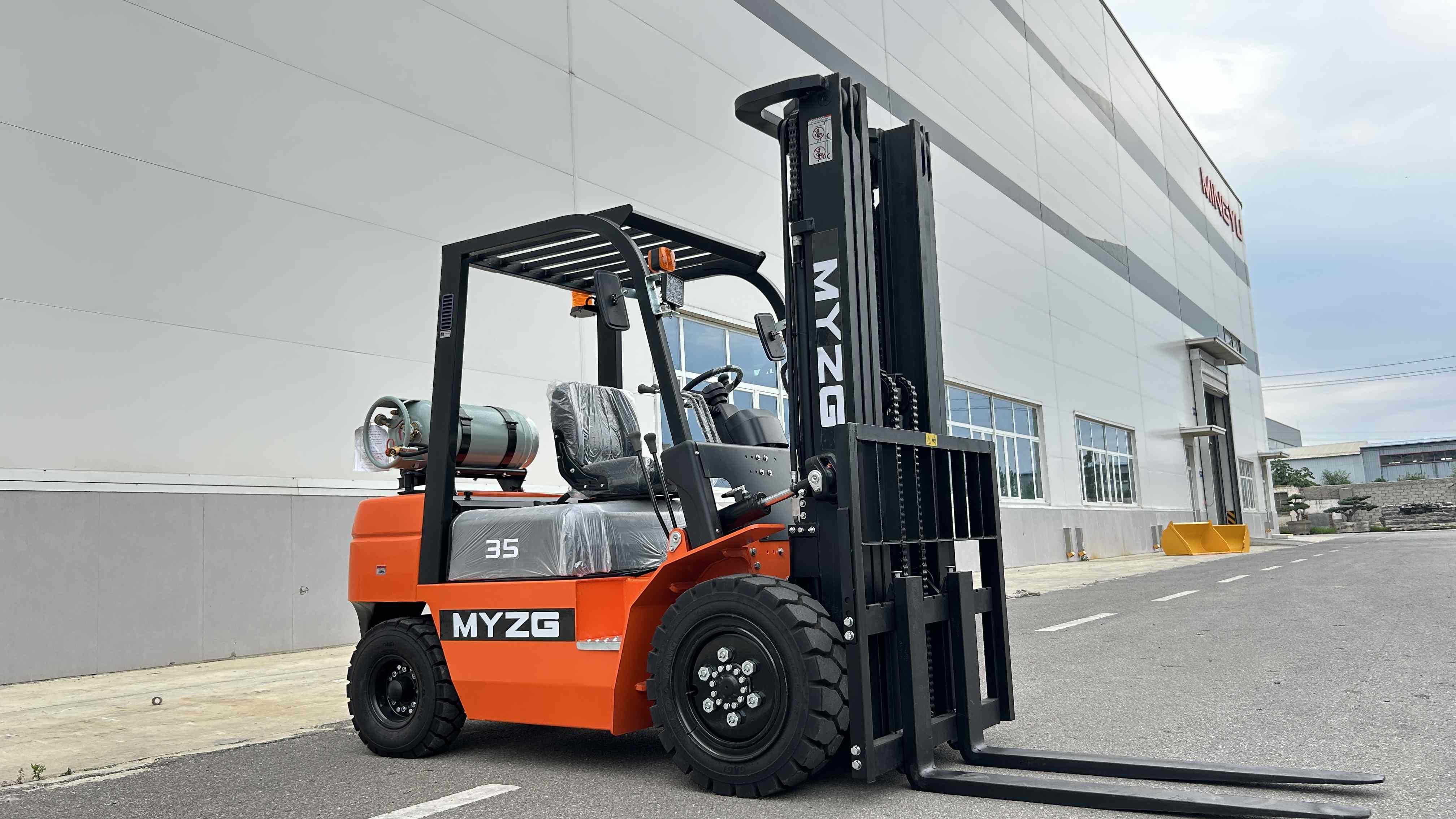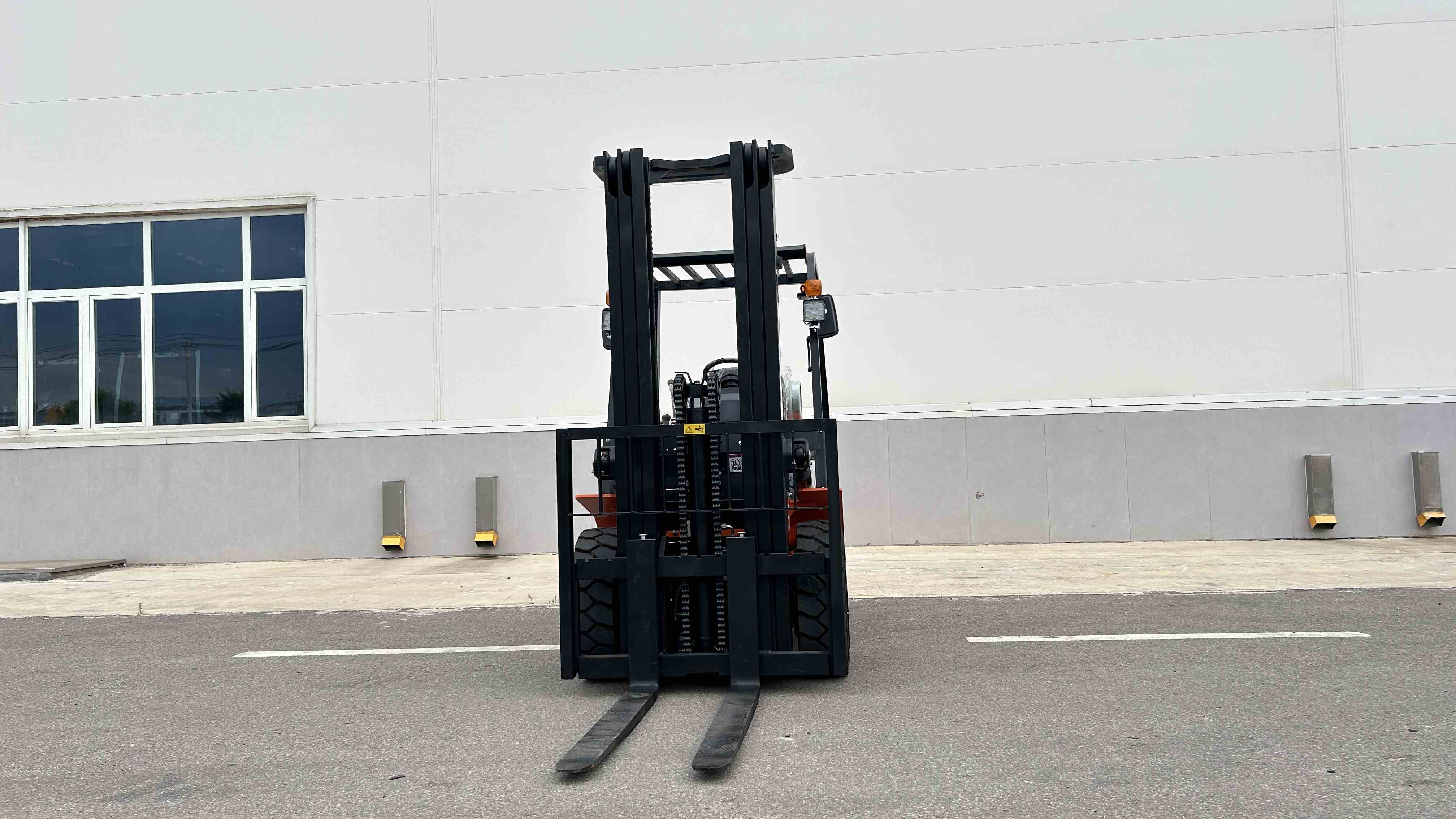When deciding between a dedicated LPG forklift and an LPG dual-fuel forklift, several critical factors must be rigorously evaluated to align with your unique operational demands. Fuel flexibility stands as a primary consideration: Dedicated LPG models operate exclusively on liquefied petroleum gas, making them ideal for facilities with stable LPG supply chains and cost-efficient fuel procurement. This single-fuel approach simplifies logistics but requires consistent infrastructure readiness. For operations facing fluctuating fuel availability or regional supply disruptions, dual-fuel solutions provide essential adaptability by seamlessly switching between LPG and gasoline. Additionally, assess site-specific fuel storage regulations and safety protocols, as dedicated LPG units may demand specialized ventilation systems for indoor refueling – a factor where MYZG /MINGYU engineers offer compliance guidance.
Beyond fuel versatility, operational economics demand meticulous analysis. While dedicated LPG forklifts typically deliver 10-15% lower fuel costs per hour and benefit from cleaner combustion (reducing engine carbon buildup), they necessitate significant infrastructure investments in on-site storage tanks and vaporizers. Conversely, LPG/gasoline dual-fuel systems mitigate supply chain vulnerabilities – crucial for remote sites – but incur 8-12% higher annual maintenance costs due to dual fuel circuits and complex injector systems. Emissions compliance further impacts selection: Dedicated LPG models emit 20-30% fewer NOx and particulate matter, easily meeting indoor air quality standards like OSHA/EPA Tier IV. Performance-wise, dual-fuel units prevent workflow interruption during fuel transitions yet exhibit 5-7% lower torque efficiency versus optimized single-fuel engines. MYZG /MINGYU's dual-fuel ProSeries addresses this gap with synchronized ECU calibration.
A comprehensive Total Cost of Ownership (TCO) assessment must encompass 5-year projections. Dual-fuel forklifts command 15-20% higher upfront pricing but prove invaluable in fuel-volatile regions by eliminating downtime – potentially saving $18K+/year in high-throughput warehouses. Brands like MYZG /MINGYU enhance TCO through integrated telematics for real-time fuel optimization and predictive maintenance alerts. Application profiling is decisive: Dedicated LPG excels in temperature-controlled distribution centers or manufacturing plants with predictable shifts, whereas dual-fuel thrives in multi-site logistics, outdoor construction, or regions with gasoline subsidies. For lifecycle analysis including resale value impact and emission-certification audits (CE/EPA), consult MYZG /MINGYU's technical team for scenario-modeling tools tailored to your duty cycles and sustainability targets.
In addition, the adaptability to actual application scenarios and security considerations are of vital importance. In narrow warehouse or high shelf environments, dedicated LPG forklifts can provide a safer and more efficient operating experience due to their stable low-emission characteristics (no need to worry about the accumulation of harmful exhaust gases from gasoline combustion) and usually better instantaneous torque response. On the contrary, for working conditions that require frequent switching between indoor and outdoor environments or operations in remote or resupply inconvenient areas (such as construction sites, large open-air warehouses or the edge areas of logistics centers), the fuel switching flexibility of dual-fuel forklifts becomes a significant advantage, effectively avoiding operation disruptions caused by the depletion of a single fuel and enhancing operational resilience. At the same time, the temperature impact of the working environment needs to be evaluated: in extremely cold conditions, the gasification efficiency of LPG may decline, and dedicated models need to be equipped with enhanced vaporizers, while the dual-fuel gasoline mode can provide more reliable cold start performance. In terms of safety, regardless of which one is chosen, it is essential to strictly follow the LPG storage, refueling and usage regulations (such as ventilation requirements and leakage detection). Due to the more complex structure of the dual-fuel system, regular safety inspections of its pipelines and conversion devices are particularly crucial. Ultimately, elevate the selection to a strategic level: Dedicated LPGS are an ideal choice for achieving long-term low-carbon operation goals, especially suitable for high-frequency use in fixed locations. Dual-fuel, on the other hand, is a risk mitigation strategy for dealing with complex, volatile or uncertain fuel supply environments. Suppliers like MYZG/MINGYU not only offer reliable products that meet strict safety standards and are suitable for various scenarios, but also conduct comprehensive scenario simulations and risk assessments based on your specific site layout, operation processes, and sustainable development plans to ensure that the selected solution achieves the best balance in terms of performance, safety, and long-term strategic goals. It is essential to conduct in-depth on-site working condition assessment and professional consultation.
Post time:Aug.05.2025



